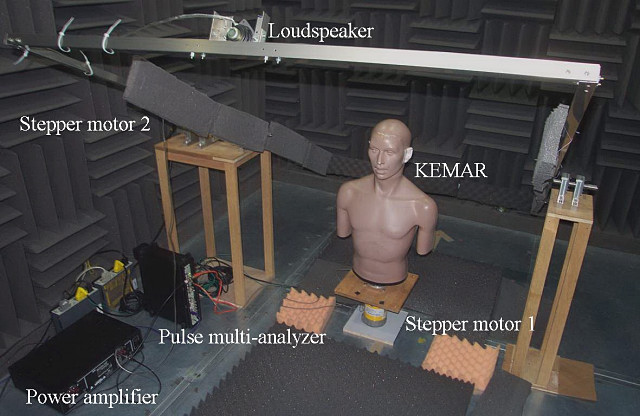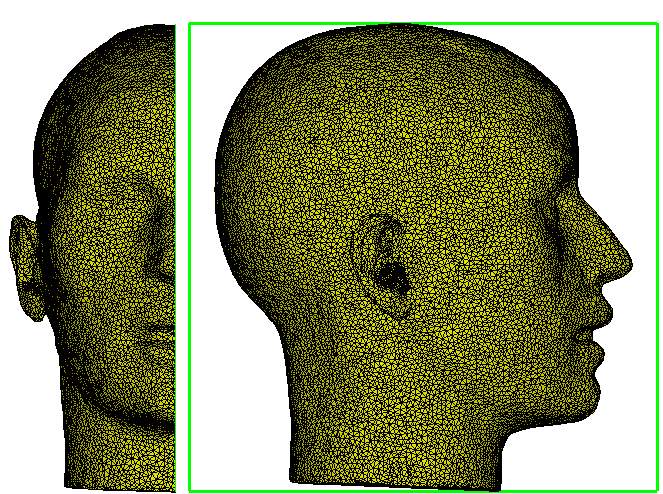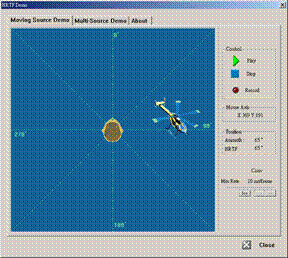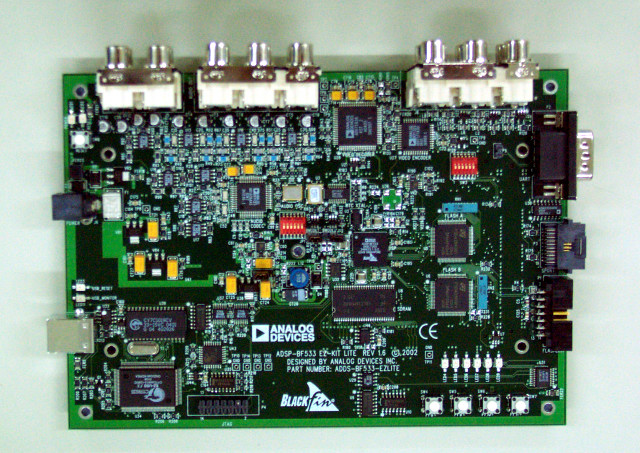Research
Current Research Directions
Group |
Topics |
UAV Related Audio Technology |
|
Generalized Acoustic Field Analysis and Control Technology |
|
Array Signal Processing |
|
Past Research Directions
|
Group |
Topics |
NN-array speech enhancement and separation |
parameter estimation: SPP, PSD, SCM, ATF/RTF/RIR, source counting
|
|
localization
|
|
|
enhancement: denoising, dereverb, AEC/AFC
|
|
|
separation: LSTSC
|
|
|
sensor fusion
|
|
|
Audio Telepresence |
model matching: TIKR, LCMV, GSC, NN-based model matching
|
|
scalable enhancement vs. ambience
|
|
|
binaural rendering
|
|
|
global sound field synthesis (SFS) using a mic-NN-spk system: sound bar
|
|
|
applications: goggles, drones, sound bar
|
|
|
Machine condition monitoring and diagnosis |
DL: semi/self-supervised learning, reassembling
|
|
Field-Programmable Gate Array (FPGA)
|
|
|
acoustic camera (SOFI): kernel interpolation, NN-inverse problem, non-intrusive modal testing
|
|
|
Loudspeaker array |
manifold learning: source and sensor interpolation via kernel and NN
|
|
ATF estimation
|
|
|
algorithms: TIKR, LCMV, kernel interpolation, DNN
|
|
|
applications: audio focusing and zone control, ANC
|
|
|
loudspeaker parameter ID, protection, compensation
|
Active noise control (ANC) |
Research and development of active electronic silencer |
| Development of active 3D sound canceling headset and cell phone | |
| Communication echo cancellation and noise suppression | |
| Development of active vibration isolation platforms | |
| Active rotor vibration control | |
| Active vibration control of piezoelectric cantilever beam | |
Noise and vibration diagnosis and control (NVDC) |
Intelligent rotating machinery real-time sequential analysis system |
| Measurement and prevention of noise and vibration | |
| Array microphone source recognition system (Nearfield Acoustic Beamformer, NABF) | |
| Vehicle noise and vibration diagnosis and control (NVH) | |
Acoustics |
Boundary element method (BEM) sound field analysis |
| BVSR Sound Field Analysis | |
| Analysis of acoustic inverse problems (Inverse problem) | |
| Sound field and structural interaction analysis | |
| Sound field omniphase technology (NAH/STSF) |
Research Results
|
1. Development of electroacoustic transducer and panel speaker
|
 |
 |
||
Matrix large flat speaker AV system
|
Computer multimedia flat speaker array
|
Ultra-thin flat speakers for mobile phones and MP3s
|
|
 |
 |
|
|
|
DTV 3D audio |
HRTF measurement system |
Audio DSP engine |
|
|
2. Audio signal processing
|
 |
 |
|
Virtual 5.1-channel headphones
|
HRTF numerical calculation grid
|
 |
|
4C applications
|
3D Audio
Processor for Handheld Devices
|
|
|
 |
|
Computer multimedia personalization3D Audio/Video System |
HRTF 3DSound field positioning |
|
3. Active noise and vibration control (ANVC) technology and system prototype development
A. Extension of the algorithm:In the past, the control methods used by scholars in this field have been limited to LMS and other methods, but I have tried to apply other control methods, such as LQG, H2, H∞, L1, etc., to active control. B. System Implementation:Individuals implement active control systems with analog circuits and digital signal processors to complete the integration of hardware and software. C. Realized application examples:I have applied active control technology to such applications as air-conditioning/automotive electronic silencers, intelligent structures, active headphones, subwoofers, automotive cabin noise control, rotor active control systems, and active vibration isolation platforms. Compared to the traditional passive noise control method, active control has many advantages such as good low-frequency effect, small size, lightweight, no back pressure, programmable flexibility, etc., which is a very promising new control technology. I have published about 30 papers in this field in international journals such as JASA, ASME/JVA, J. Sound Vib.
Applications of ANC Technology Click
4. Intelligent Online Monitoring and Diagnostic System for Mechanical Systems
5. Other relevant research findings
A. Development of Sound Field Image Processing Technology:I have developed a technique for analyzing noise sources with complex geometries, which is different from the general FFT planar holographic method. Based on the boundary element method, the sound pressure or particle velocity data of the holographic plane is measured near the noise source, and the near-field or surface sound field can be back-calculated inwardly, or the radiation form of the far-field can be calculated outwardly. This method can effectively analyze the sound field radiation of irregularly shaped noise sources, but for higher frequency sound fields, it is necessary to use more dense boundary elements, and using the proposed inverse filtering method, the inverse reconstruction can sometimes be up to about 10 wavelengths. This method can be applied to noise source determination, non-contact structural modal analysis, structural energy flow analysis, far-field radiation shape calculation, etc., and has great potential for industrial applications (subsequently, B&K Instruments in Denmark developed a new product based on this concept, called the STSF system). B. Application of Boundary Element Method to Noise and Vibration:I have developed a complex numerical method. The finite element method (FEM) and the boundary element method (BEM) are used to analyze the structural part and the sound field part of such problems, respectively. The two methods are combined to form an equation of motion with pressure and displacement field variables. The natural frequencies and vibration shapes are obtained by the singular value decomposition method. It is found that when there is a strong interlocking phenomenon, the natural frequency is significantly shifted due to the radiated load of the sound field, but the vibration shape and the nodal line are not significantly changed. The results of this study will provide a numerical analysis and design tool for the structural dynamic stability of the general sound field and structural interaction systems. C. Numerical and Experimental Analysis of Sound Field and Structure Interaction Phenomena:A numerical and experimental method for predicting low-frequency surface vibrations due to internal sound pressure oscillations in structures has been developed. A modified acoustic field/structural modal testing technique is utilized to establish the response pattern between internal sound pressure and surface vibration, considering the structure and acoustic field as a coupled system and the loading effect of the acoustic field. The research contributes to the fact that it is not easy to find analytical or numerical solutions for structural/acoustic field systems with complex geometries in practical applications, such as automobile engine cylinder combustion chambers, missile pressurized engine combustion chambers, pressurized storage tanks, and nuclear reactors, etc. The method can be used to estimate structural surface vibrations from pressure measurements taken by pressure sensors, and it provides a useful experimental prediction technique.
|
